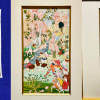Are AI art generators really worth it?

If you give the prompt 'write an article on AI art generators' to ChatGPT, it gives you a very straightforward and positive write-up. ChatGPT will tell you that these free online tools are enabling people to get in touch with their creative side and inspiring everyone to become an artist. There's perhaps a line or two about the ethical concerns, but in the world of artificial intelligence, writers, singers, painters and artists are all at risk. Or so you would think.
AI has come a long way. ChatGPT was recently in the spotlight and amongst heated discussions. Side by side, we now have AI art generators. It's almost the same as ChatGPT — you insert a prompt, click generate and wait for the algorithm to do its magic.
There's a good reason why AI art generators haven't taken the internet by storm and why artists and painters aren't talking about it. But before we get into that, let's talk about what AI art generators actually are and how they function.
To name some AI art generators, one of the most efficient is Midjourney. Other than that, you have DALL-E 2 (Salvador Dali's legacy manifesting in the 21st century), Starry AI (another modification of The Starry Night is just what the world needed), Gencraft, Nightcafe Creator, and WOMBO Dream — these generators are decent.
Essentially, how these generators work is that you enter a prompt in text, with as many details as you want, you choose your art style and click generate. What you're supposed to receive is an image of exactly what you described. Most of these generators will tell you that they are free and they are, for the first few prompts. Not to mention to begin using most of them, you have to open an account. During the free trials, there are many limitations — character limitations in the prompt, restricted to certain art styles and a number of generations with a specific timeframe.
The concept of a text-to-image art generator sounds intriguing and indeed it is, if done right. The main issue with all these generators is the human touch (a little cliche but true). The generators are great in generating images of 'a young girl reading' or 'a cat fighting another cat with a sword,' but not much in generating 'a close-up of a sad girl reading.'
One can argue that these generated images could act as a template for artists and graphic designers to work on, but the images are heavy and sometimes detailed in a way that has nothing to do with your prompt. Yes, these are great tools if you're working on an urgent deadline or simply cannot draw or are completely in the dark about graphic designing. However, you will need to tweak it quite a bit. If you're looking for perfection in terms of the image you want, you might be spending hours trying to get your prompt right, only to eventually understand that the AI generators are unable to convey emotions effectively. Additionally, if your prompt has too many details, such as a background, colour scheme, patterns — it's likely that the generator will just randomly pick the details and give you an image.
AI art generators are fun to play around with; they're useful when you have a project due and couldn't be bothered to get creative hands-on. But they lack a certain movement and fluidity that is present in human generated artwork. This argument is the same for ChatGPT, but it's safe to argue that ChatGPT has come a long way to master being a human writer. In truth, AI art generators have a long way to go and it'll be years before these online tools can master the brush strokes of Picasso or even be able to create social commentary like Banksy.
So, until the day comes when museums are filled with artwork that doesn't require the 'artist' to buy a pencil or paintbrush, we can rest easy and artists can continue battling the narrative that art is easy.

 For all latest news, follow The Daily Star's Google News channel.
For all latest news, follow The Daily Star's Google News channel. 








Comments